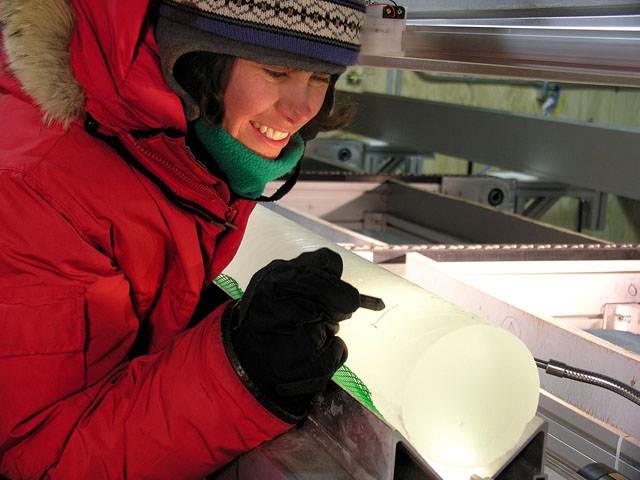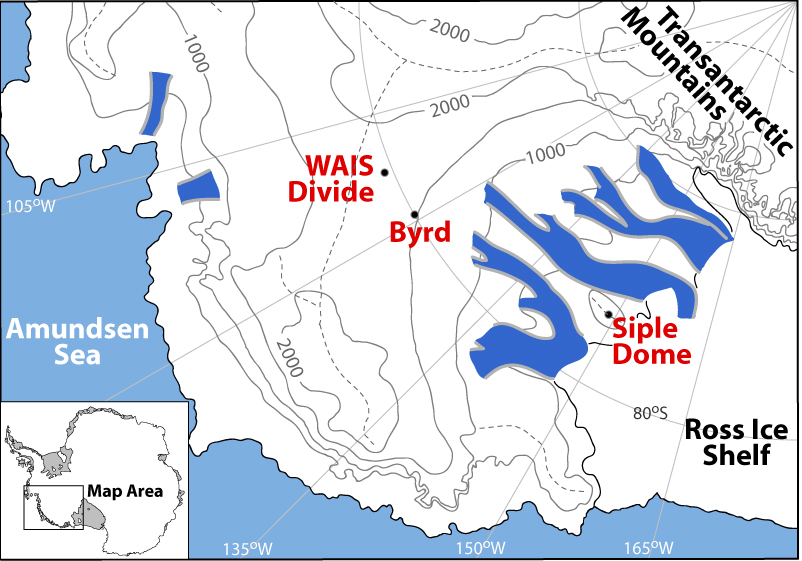|
Page 2/3 – Posted October 31, 2008
Big operationThis will be the second of three drilling seasons for the project, which is supported by the largest field camp in Antarctica, about 1,600 kilometers from the U.S. Antarctic Program’s The camp was established during the 2005-06 field season. Its facilities include a communications tent, medical tent, galley tent, a recreational and wash tent, three Jamesways (MASH-type buildings), mechanics shop, generator module, science tent, and the drilling and core-handling arch built at the site. The camp also uses several pieces of heavy equipment such as a 953 Caterpillar, a Tucker Sno-Cat, a Pisten Bully and a Caterpillar D4 Bulldozer. “It’s a big industrial facility,” Taylor said. Ice Core and Drill Services (ICDS) Related Articles
♦ Greenhouse gas:
Connecting the pieces ♦ Biology: Biological pulse ♦ Special Sun package on WAIS 2006-07 “They just turned it on, and it worked — which was amazing,” Taylor said, chuckling. The season went well, he said, though the project fell short of its goal, drilling down 580 meters. Poor weather — one of the attractions of the site — and other factors conspired to shorten the amount of productive drilling time. “Everybody did their job; just a combination of things slowed us down,” Taylor said. “Whenever anything goes wrong, it comes out of the drill time.” The team faces an even tighter, time-sensitive schedule this year. Budget cuts by the NSF have shortened the drill season, and the goal is to drill through about 700 or 800 meters of so-called brittle ice. The air bubbles in brittle ice are so compressed that pressure is intense enough to shatter the core once it reaches the surface, Taylor explained. “It starts breaking apart in front of your eyes,” he said. “Our big goal is to get through the brittle ice this year because the brittle ice sits on site for one year. It’s so brittle we can’t even ship it back [right away].” The drill is designed to be as gentle as possible, and will use special drill bits through the brittle zone, according to Charles Bentley, principal investigator for ICDS and a scientist who has been to Antarctica every decade since the 1950s. [See a profile on Bentley: Practically home.] Past about 1,400 or 1,500 meters, the trapped air will have been squeezed into the ice crystals rather than into separate air bubbles, so the ice won’t be as brittle, he explained during a previous interview before visiting the WAIS Divide camp in January. “It no longer shatters that easily,” he said. Taylor said he is optimistic the drillers can get through the brittle zone in the few short weeks of scheduled drilling, an around-the-clock operation. “We should get a quicker start because the facility is in better shape, the drill is already up,” he said. “If we don’t get through the brittle ice, it really messes up the measurements back home in terms of the laboratories being fully occupied.” |



For USAP Participants |
For The Public |
For Researchers and EducatorsContact UsU.S. National Science FoundationOffice of Polar Programs Geosciences Directorate 2415 Eisenhower Avenue, Suite W7100 Alexandria, VA 22314 Sign up for the NSF Office of Polar Programs newsletter and events. Feedback Form |



